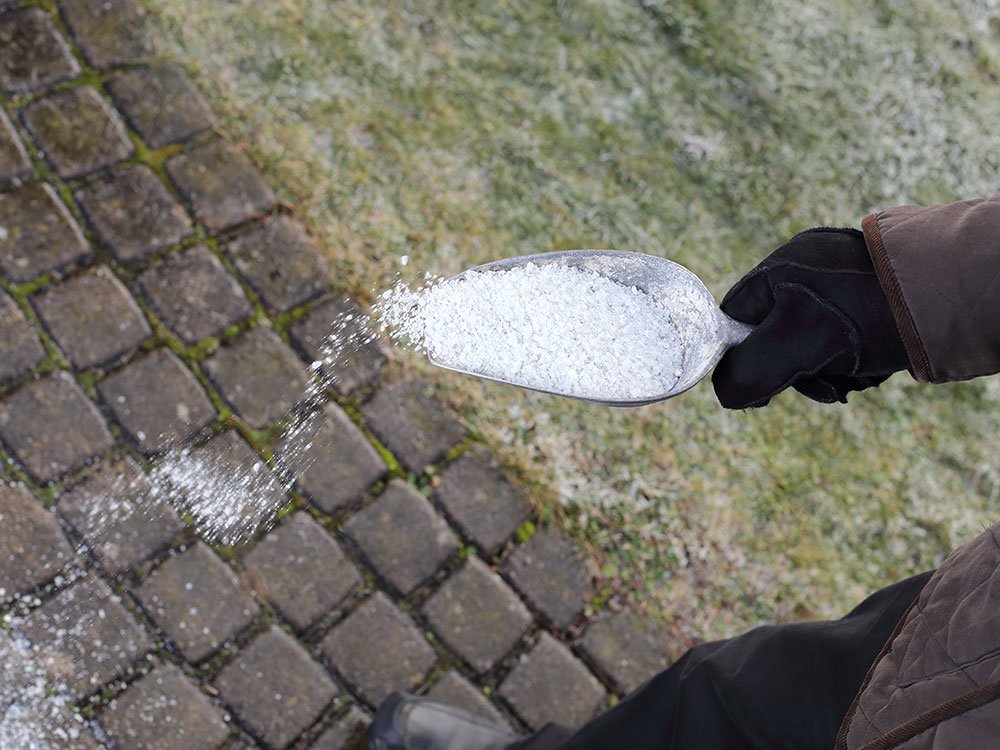Many people use salt to melt snow and ice during the winter. It improves traction in the driveway and reduces the danger of slipping on paths. Rock salt is usually used for this purpose. However, some people advocate using ordinary table salt instead. Determining which is better depends upon what aspects of this choice are most important to you.
Chemistry: The proper chemical name for rock salt is sodium chloride. It is exactly the same substance as table salt, only larger. This is because it is less-refined. Table salt has been processed more to break it up into smaller crystals.
Freezing and Melting Processes: To understand the way that salt melts ice, consider first what happens to water as it is freezing. Those water molecules that are already frozen absorb the heat of the molecules in the liquid portions, slowing them down and causing them to freeze. Molecules in the liquid portion strike the molecules that have been frozen, warming them up, causing them to melt. At 32 degrees Fahrenheit, the melting processes and freezing processes are in balance and happen at the same rate. Under that temperature, the freezing processes dominate and the water becomes all ice. Above that temperature, the melting processes dominate and the water becomes all liquid.
Salt, Freezing and Melting: When something like salt dissolves in water, it displaces some of the water molecules, shoving them aside to make room for itself. However, the bonds between molecules in ice are a lot tighter and do not allow salt to fit. Therefore, there are fewer warm liquid molecules for the frozen molecules to freeze. The freezing process slows down. There are just as many frozen molecules as ever for the liquid molecules to melt. The melting processes remain the same. The net result is that the melting processes suddenly dominate the freezing processes. This is why salt melts ice. As it comes into contact with it, it melts the surface of the ice and slowly sinks into it, melting all the ice with which it comes into contact.
Comparison: Table salt is more finely ground than rock salt. The finer something is, the more surface area it has. As a consequence, table salt will melt ice faster than rock salt simply because it has more surface area and so touches more of the ice at once. In this sense, table salt is better than rock salt for melting ice. It works better. However, rock salt is the most widely used because it is readily available and the most inexpensive. In this sense, rock salt is better for melting ice in that it works and is cheaper.

